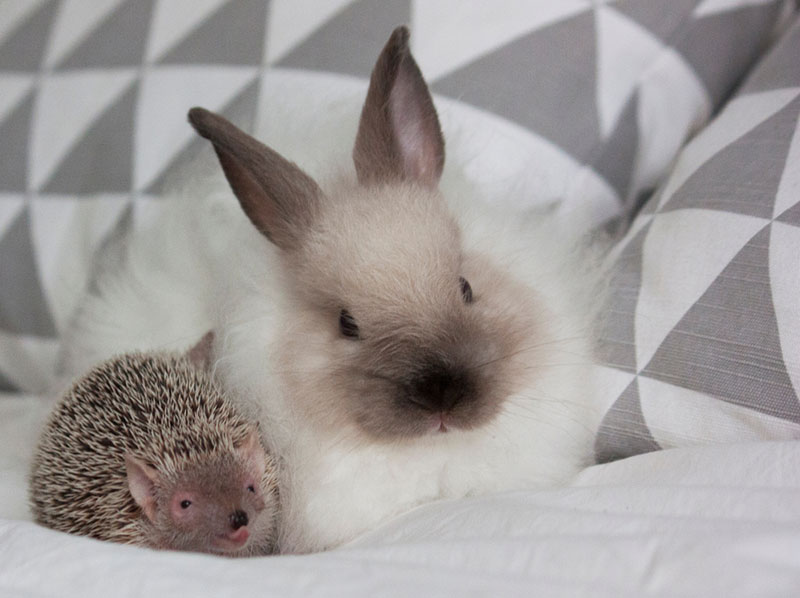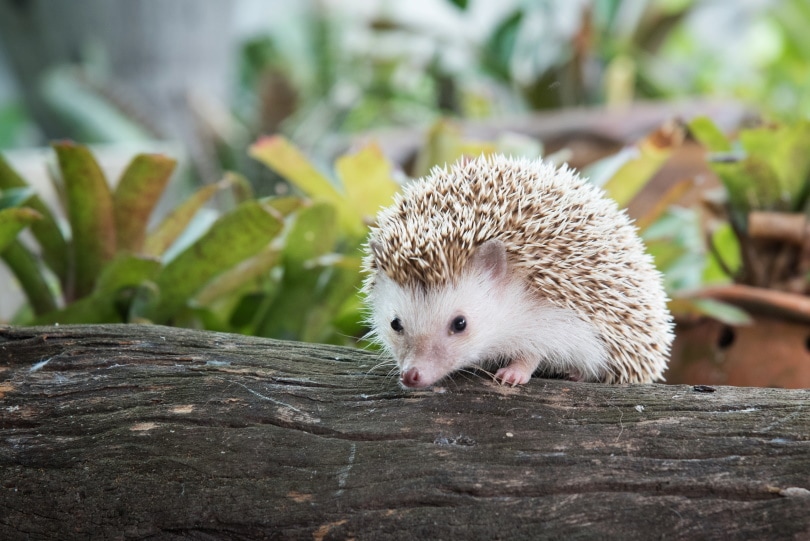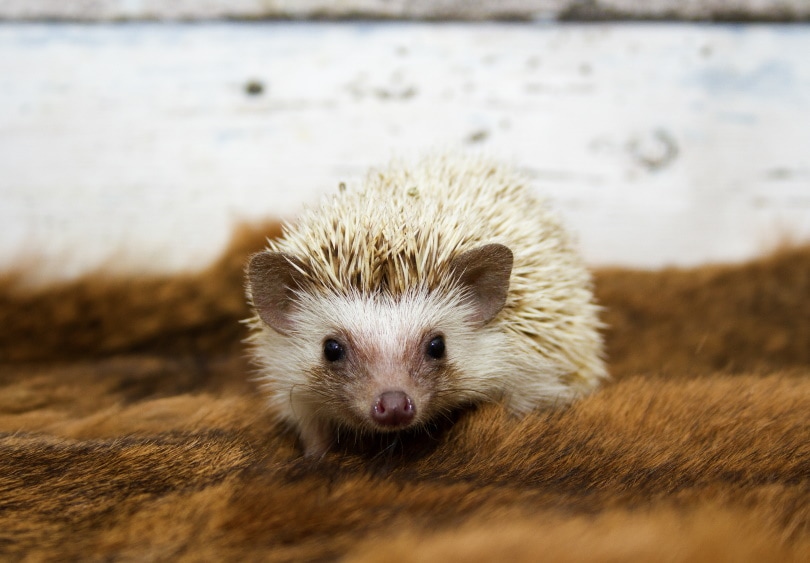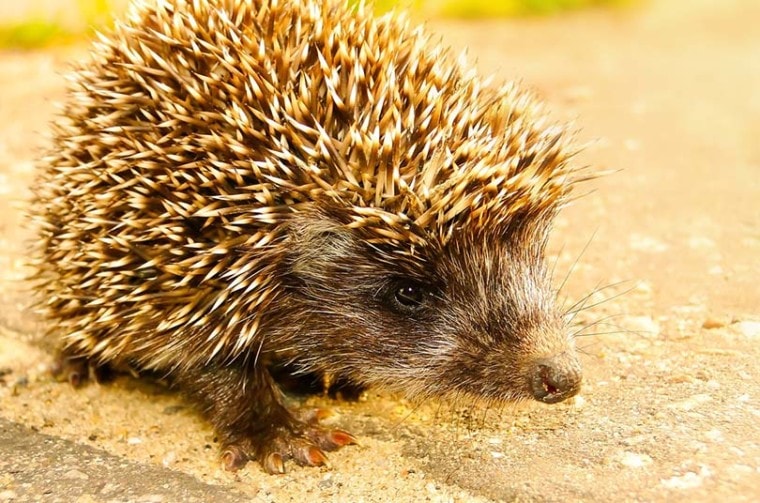
The desert hedgehog is one of the smallest hedgehogs you can find, but its quills are longer, offering it superior protection. If you are thinking about getting one of these animals for your home, we can tell you that this type of hedgehog is rarely found as a pet, as it largely lives in the wild.
Keep reading while we explain more about this unique animal, including its appearance, temperament, living conditions.
 Quick Facts About Desert Hedgehogs
Quick Facts About Desert Hedgehogs
| Species Name: | Paranthropus aethiopicus |
| Family: | Erinaceidae |
| Care Level: | Easy |
| Temperature: | 104 – 108 degrees Fahrenheit |
| Temperament: | Shy |
| Color Form: | Brown, black, white |
| Lifespan: | 3 – 10 years |
| Size: | 5 – 11 inches |
| Diet: | Insectivore |
| Compatibility: | Not a good pet |
Desert Hedgehog Overview
As its name implies, the desert hedgehog lives in the hot and dry regions of many countries, including Algeria, Egypt, Iran, Iraq, Jordan, Libya, Sudan, Syria, and more. It’s plentiful in these areas because it enjoys temperatures above 100 degrees Fahrenheit and is tolerant of environmental changes.
How Much Do Desert Hedgehogs Cost?
Important to note, the desert hedgehog does not do well in captivity like other hedgehogs, so it’s unlikely you will find a breeder. If you find one for sale, it is most likely a wild-caught animal that can have many health issues and could even be dangerous. Though these animals are not in danger of extinction, it’s not a good idea to take wild animals out of their natural environment.
Typical Behavior & Temperament
Desert hedgehogs are similar to cats in that they spend much of their time sleeping. Spend much of their time sleeping. In fact, it’s not unusual for a hedgehog to sleep for as long as 18 hours in a single day. When facing a predator, it tends to run first before rolling up. It’s also a natural friend to farmers and gardeners because it helps clear away the insects, reducing the need for chemicals.
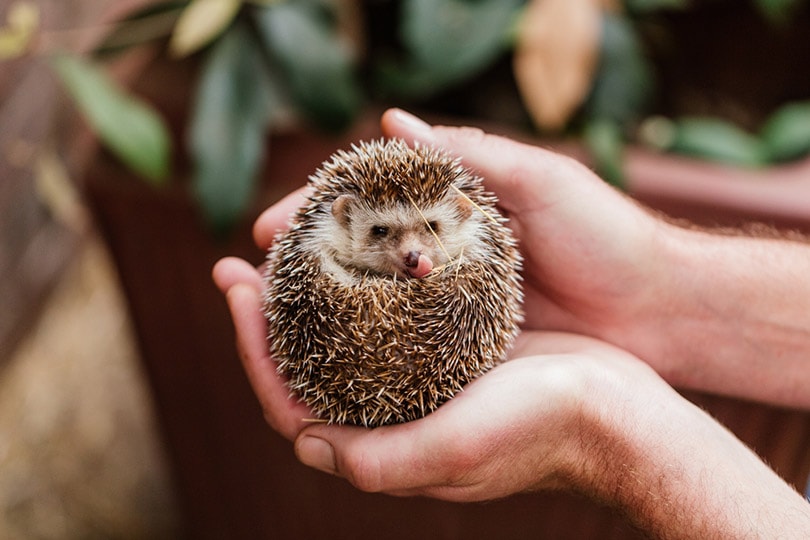
Desert Hedgehog Appearance & Varieties
The desert hedgehog is one of many hedgehogs that also include the European hedgehog, northern white-breasted hedgehog, African pygmy hedgehog, and many others. The desert hedgehog has spikes across its back like other breeds, and they are slightly longer than most. The spikes are hollow and usually brown with dark tips. It will have a bald head, pointy ears, and a dark muzzle. It’s one of the smaller breeds, growing to between 5 and 11 inches and weighing a little under one pound on average.
Desert Hedgehog Living Conditions
Desert Hedgehogs like hot and arid environments. They often take shelter near large rocks that provide natural protection and like to look for food around vegetation at night, so your garden is likely to attract them if you live in an area where they do. An ideal place to find them is near water, where there is plenty of vegetation which will also bring insects. Unfortunately, you cannot find them in the United States even though they would probably enjoy our southwestern states.
Do Desert Hedgehogs Get Along with Other Pets?
As we’ve pointed out, the desert hedgehog should not be added as a pet to your home. This is a solitary creature that prefers to spend most of its time alone. It’s unlikely to become aggressive and will usually try to run away before rolling into a ball to use the quills for protection. If you have one of these animals visiting your garden, we recommend keeping your dogs and cats away from the area, especially at night when the desert hedgehog is most active.
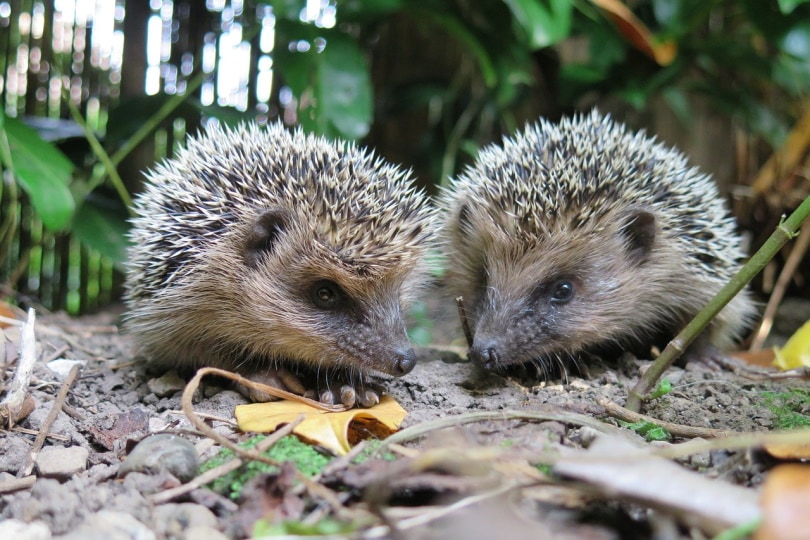
Desert Hedgehog Diet
The desert hedgehog is an insectivore which makes it so helpful to farmers because it eats the bugs they would otherwise need to treat with dangerous pesticides. It will also eat frogs, snakes, scorpions, and similarly small animals. It’s quite resistant to snake venom and can withstand several times more than other rodents.
The desert hedgehog has a special kidney design that allows it to go a long time without water due to the environment it likes to live in.
Desert Hedgehog Health
As we mentioned earlier, the desert hedgehog is not in danger of extinction and is amazingly tolerant of climate change, but that’s no reason to capture them or attack them. They pose no threat to our plants and do not do well in captivity. The best way to keep the desert hedgehog healthy is to leave it be.
Hedgehog Predators
Unfortunately, though the desert hedgehog has plenty of protection with its speed and spikes, it has few predators. One of its biggest predators are birds of prey, like the hawk and owl. However, a snake, mongoose, weasel, badger, jackal, and even other hedgehogs might try to make a meal out of the desert hedgehog.

Desert Hedgehog Breeding
The desert hedgehog will usually hibernate during the cooler winter months, and the breeding season will begin once they wake up, usually in early March, as long as they are at least one year old. The male will walk in a circle around the female several times to show he is interested. I5t will build a nest in a crook, and the gestation period lasts for 30–40 days before the female gives birth to around six babies. The babies cannot see, and their spines are just below the skin, so they don’t hurt the mother. She will nurse them for another 40 days until they can care for themselves.
Other Fun Facts About the Desert Hedgehog
 Are Desert Hedgehogs Suitable for You?
Are Desert Hedgehogs Suitable for You?
Unfortunately, the Desert Hedgehog is not a pet, so it is unlikely that you will be able to keep one in your home. However, if you don’t live in the United States and have one in your garden, leave it be to reap the reward of this animal’s excellent ability to eliminate pesky insects.
Featured Image Credit: krzysztofniewolny, Pixabay
 Quick Facts About Desert Hedgehogs
Quick Facts About Desert Hedgehogs